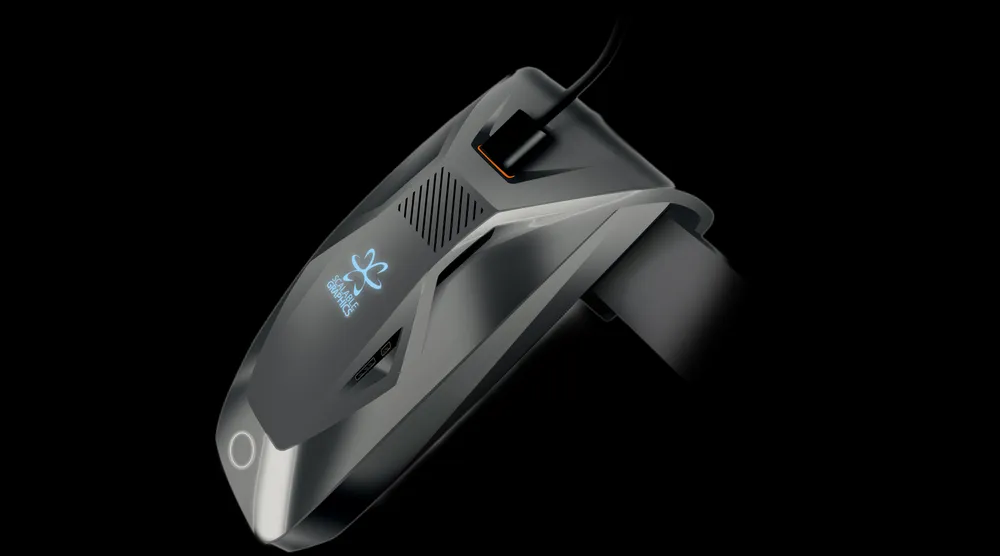TPCAST’s wireless add-on kit for the HTC Vive has a new rival that’s promising to cut the cord on both HTC’s headset and the Oculus Rift.
KwikVR from 3D cloud solutions company Scalable Graphics is set to debut at CES 2017 in Las Vegas next week as the latest device to try and remove the troublesome wire that connects your headset to the PC running what’s showing inside. The kit consists of a small box that connects to your Rift or Vive and is then worn on the user, perhaps attached to a belt. A USB dongle plugs into your PC and a Wi-Fi router connects to your network adapter. The system works over 5 GHz Wi-Fi and apparently offers native resolution for each headset.
https://youtu.be/qDOTwm5RZqg
An official site for the device claims to offer “100% compatibility” with both of the major PC-based headsets without the need to modify them. The trailer above only shows it being played on the HTC Vive, however. It also states that latency introduced is “guaranteed” to be under 12 milliseconds, though it sounds like this is in addition to existing latency from the headset itself. We’re yet to go hands-on with the kit for ourselves, and no release information has been provided at this time.
The box apparently weighs around 1 pound, and sports a four hour battery life (TPCAST is said to offer either 2 or 5 hours depending on the size of battery you buy). As for the lengthy wires that your Rift and Vive already sport? The footage shows them tied up and dangling from the user’s back. It doesn’t seem like the most elegant solution, though it’s possible the company will be showing an updated version when next week’s show rolls around.
We’re still skeptical about how viable wireless add-on kits will be for the PC VR market, though we were definitely impressed with TPCAST’s solution when we tried it for ourselves a few weeks back. We’re as eager as anyone to get access to high-fidelity, position-tracked wireless VR, but augmenting existing headsets with third-party add-ons definitely seems like more of a workaround than a true solution.
But KwikVR and TPCAST are far from alone in their quest to make desktop VR wireless. In October we reported that Valve invested a “significant amount” in Nitero, a company currently working on its own wireless desktop solution, while QuarkVR is also working on a wireless prototype for the Vive. While headset makers race to improve the second generation of their products, it looks like we can depend on others to incrementally refine the experiences we’re getting now, though each still has a lot to prove.
We’ll look to bring you a report on KwikVR during the show next week.


























